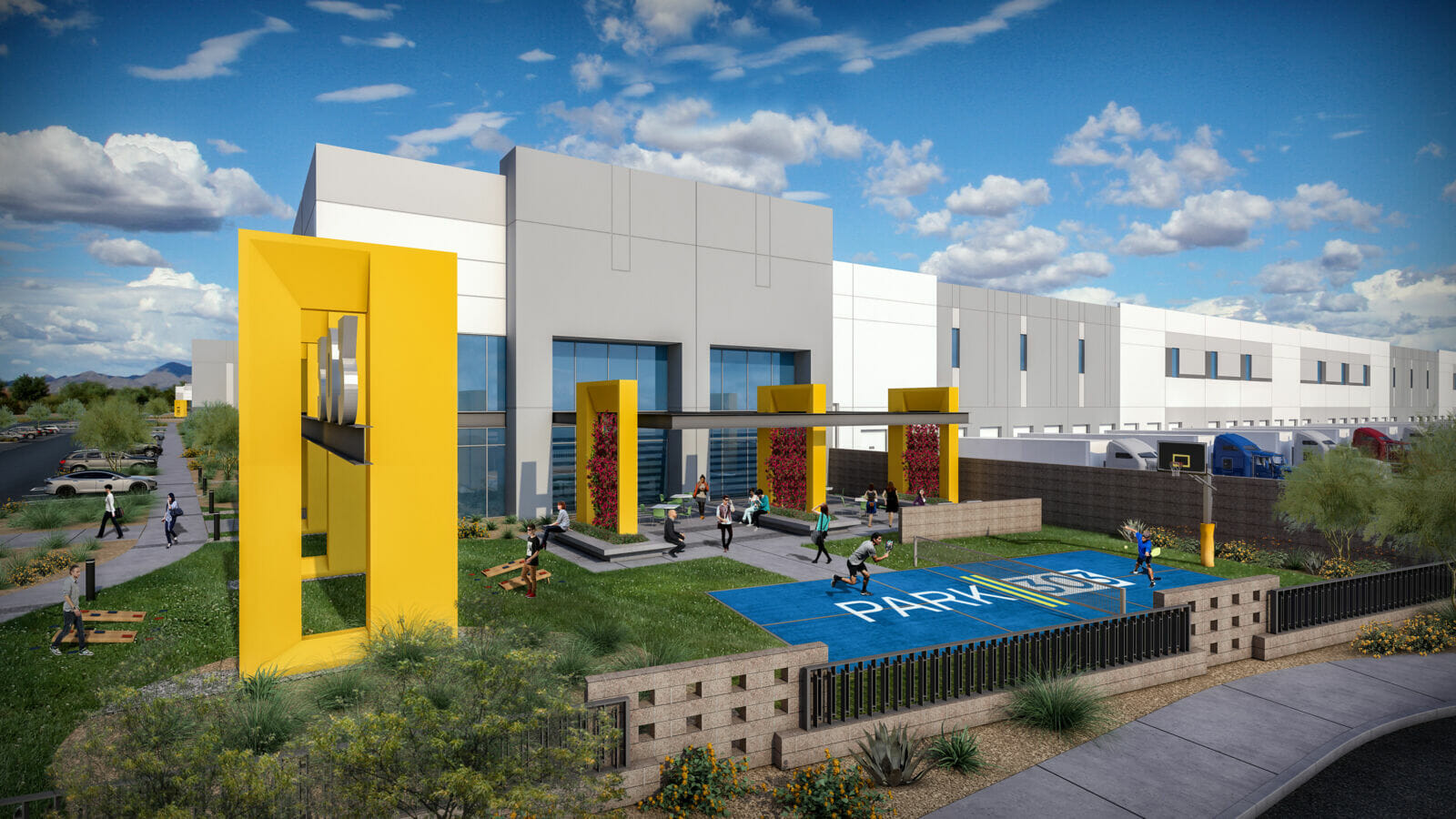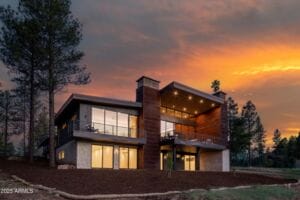In 2015, the City of Glendale hosted Super Bowl XLIX, where the New England Patriots forged a stunning comeback win against the Seattle Seahawks. Eight years later, fans from across the nation gathered once again in Glendale for Super Bowl LVII, but the city — and the whole West Valley — has transformed since Tom Brady earned his fourth Super Bowl ring.
Kevin Phelps, city manager of Glendale, took on his role in 2016 and has been instrumental in the municipality’s growth. When he started, there were .31 jobs per person, meaning that for every 100,000 Glendale residents there were 31,000 jobs.
“The federal government defines a major job center as a community that has .5 jobs per [person],” Phelps explains. “We’ve been working on increasing that number and are about .4 jobs, which means we have close to 100,00 jobs now inside the City of Glendale.
“When you live and work in the city,” he continues, “you feel more connected to your community, have less commute time and more availability to volunteer — whether it be in your faith-based organization, coaching soccer or Cub Scouts.”
Phelps attributes the expansion of employment opportunities to establishing good public policy and executing it. He notes that previous city officials were wary of annexing land into the municipality because of the taxpayer burden associated with building new roads and infrastructure.
“When I first got here, I worked with our council through a series of workshops and made the recommendation that we get into a pro-annexation position but narrow down how and what kinds of projects we would annex,” Phelps continues. “We very deliberately said we wanted Glendale to become a job center.”
Growth in Glendale
By making the conscious choice to attract high-quality, large-scale employers that provide wages that workers can raise a family on, Phelps knew that meant saying no to other uses, such as single-family and multifamily housing. The city went as far as enshrining that commitment in the general plan by only permitting residential projects for already-entitled land.
From a business perspective, Phelps explains, the revenue the city receives from rooftops “comes nowhere close” to offsetting the cost to provide services, such as police and fire departments. In 2016, Glendale collected approximately $6.6 million in permitting fees for new development. North of $44 million was collected last year, which goes into the general fund.
The idea that prioritizing industrial projects over housing developments would hurt residents is misguided, according to Phelps, adding that the city council has parameters around the sort of businesses it’s willing to work with.
“Our strategy is to be a job center [so] we can take the revenue [from fees and taxes] to improve the community for the existing citizens,” he says. “We [know] large employers will come courting, but we want to be careful not to offer any incentives or cooperate if they won’t pay benefits or a family wage. We politely said no to a retailer that was going to pay $12 an hour with no benefits yet would’ve brought in 2,500 jobs.”
Winning ways
The pro-growth posture the City of Glendale has adopted under Phelps has led to a boom in employment opportunities for residents and has drastically increased industrial development. He notes that in 2016, approximately 14 million square feet of industrial manufacturing space had been built in the entire municipality since its founding in 1892.
“We gave certificates of occupancy for [a total of] 30 million square feet in 2021 and we have another 30 million either in pre-development, development or in construction,” Phelps says. “We’ve seen a lot of speculative building, which is indicative of the private equity markets having confidence in the Glendale market.”
READ ALSO: The Base adds 2M SF to Glendale industrial market
Glendale, host of Super Bowl LVII, isn’t the only West Valley city amidst an industrial renaissance — Goodyear has also seen more developers buying up land to develop large projects.
“Today, Goodyear is in the middle of incredible growth and a rapid transformation from a small city to an economic powerhouse,” says Joe Pizzilo, mayor of Goodyear. “Over the past two years, we’ve added 5,000 jobs and we’ve had more than $2 billion worth of capital investment.”
PepsiCo Beverages North America (PBNA) is among those investors. On Jan. 12, the ribbon was cut on its new 238,000-square-foot warehouse in Goodyear, which will bring 65 new jobs to the area and house 300 employees at full capacity.
Johannes Evenblij, PBNA West Division president, notes that the company has had a presence in the Phoenix Metro since 1971. “We now have nine facilities and almost 3,000 employees here. We are deeply committed to this community, and we will continue to grow.”
Glendale Super Bowl impact
Just a few miles southeast of the PepsiCo facility, Lincoln Property Company is building Goodyear Airpark, which will add 8 million square feet of industrial and commercial space to the market upon completion. On Jan. 12, the company broke ground on phase one of the project, consisting of 1.6 million square feet of speculative product across six buildings.
“That means there’s 37 acres under roof of this project,” says David Krumwiede, senior executive vice president at Lincoln Property Company. “This is just the first phase of the whole 565 acres that we’re developing out here.”
The balance of the land is available for build-to-suit construction or additional speculative product depending on market demand.
One of the reasons the West Valley is an attractive place to developers is the how those municipalities view the prospect of growth. Phelps draws a distinction between having the mentality of a regulator versus a facilitator. The former believes they have no responsibility to find solutions to issues, whereas the latter takes an active role as a problem solver.
“A regulator says, ‘If you bring me a project, I’m going to say no, you’re not following these building codes, go back and make the change,’” Phelps explains. “A facilitator says, ‘Look, this isn’t meeting our code, let’s work together to find a workaround so that we can deliver a project that meets the codes.’”
Built for speed
Phelps recalls how attentiveness and a willingness to be a facilitator helped attract the 916,000-square-foot White Claw brewing facility to Glendale. Mark Anthony Brewing, which owns the White Claw brand, was backlogged 58 million cases at the time and had to throttle distribution because of limited supply. Since speed to market was paramount, Phelps assembled the directors of multiple departments to all meet with Anthony von Mandl, founder and CEO of Mark Anthony Brewing.
“We had spent several weeks developing a Gantt chart on scheduling and how we could deliver, from beginning to end, a 1 million square foot building in 12 months,” he says. “They were blown away that we were even thinking about time and speed.”
After the project was completed, Mark Anthony Brewing sent the City of Glendale a challenge coin with “280” emblazoned across the face — representing the number of days between that first meeting and the company receiving the certificate of occupancy for the facility.
In similar fashion, Josh Crosman, vice president go-to-market, strategy and transformation of PBNA West Division, says that the Goodyear facility was one of the fastest, if not the fastest, built in the history of PepsiCo.
“It’s not just the City of Goodyear, but all the West Valley cities that continue to support businesses,” he says. “We wouldn’t be able to [grow] without having great cities, councilmembers and communities.”
Krumwiede echoes the sentiment that the West Valley is pro-development, noting that the real property taxes from an industrial or commercial project far exceeds what is collected from farmland, which can be used for various community improvements. The West Valley, he says, has transformed itself into a full-fledged commercial region with high-end residential options and entertainment.
“The leadership [of Goodyear] from [the mayor] all the way down has been great,” Krumwiede concludes. “They want high quality developments, which is what we build and produce. These aren’t old, dusty warehouses with a couple of forklifts — these are employment centers.”




